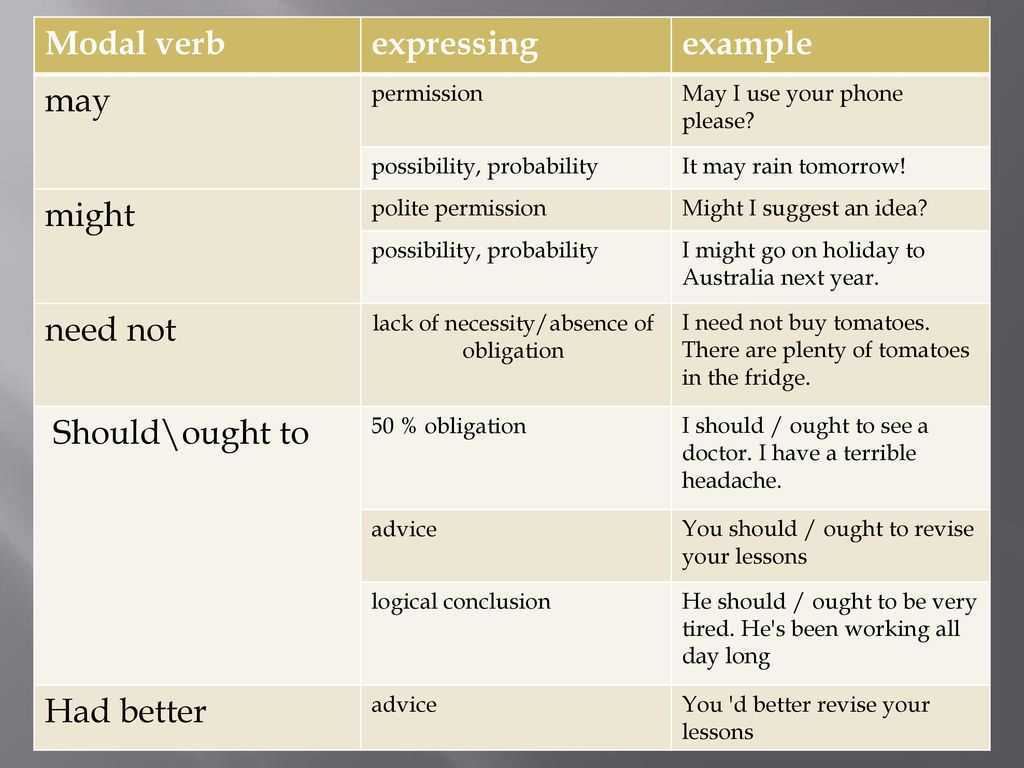The Beatles
The Beatles famously plugged an electric guitar straight into the console to get the distortion you hear on “Revolution.” It’s the sound of a solid state preamp overloading. In order to recreate this, you would need a preamp with separate input and output gain. I’ve used the Hudson Broadcast pedal which is essentially the preamp from an old British broadcast console housed in a pedal. It nails a tone that is surprisingly hard to recreate otherwise. You can also use this method with other instruments. Try running a bass or keyboard into an overdriven preamp to add some gritty texture to the sound. You don’t just have to use solid-state preamps either. Overdriven valve preamps are a favorite choice of many musicians and engineers.
Article Content
The term “direct box,” or DI, is short for direct injection box. The basic concept of a DI is rather simple — it’s a box designed to convert a high-Z (high impedance) signal to a low-Z (low impedance) signal. Think of a DI as a signal translator.
Passive acoustic and electric guitars deliver high-Z signals. Active pickups deliver a low-Z signal. Pro audio equipment like mixing boards and mic preamps are low-Z devices. In order for high-Z and low-Z gear to make glorious lurve, they need a mediator. The signals need to match — and they will match at low-Z.
Low-Z signals are much better equipped to send signals over long distances. I’m sure most guitarists have the ongoing discussion over buffers in the signal chain. A buffer converts a high-Z signal into a low-Z signal which is really helpful when you’re running through many pedals and cables. High-Z signals lose high end on long cable runs and may pick up noise. This is why you hear a difference in tone going from a 10ft to a 20ft guitar cable and also why you don’t see too many guitar cables longer than 20ft. A carefully placed buffer can help retain the full frequency spectrum of your sound on long cable runs.
Not all buffers are created equal, though. Some can influence your tone in an unflattering way. Some of my favorite buffers are the Analog Man Buffer and the Effectrode Glass-A Triode Buffer.
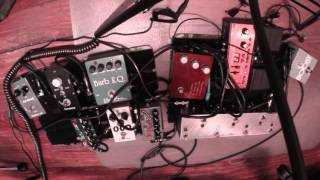
To Buffer or Not to Buffer, That Is the Loaded Question
The term “direct box,” or DI, is short for direct injection box. The basic concept of a DI is rather simple — it’s a box designed to convert a high-Z (high impedance) signal to a low-Z (low impedance) signal. Think of a DI as a signal translator. Passive acoustic and electric guitars deliver high-ZPlay Video
Just like all buffers are not created equal — the same can be said for DIs. People who are serious about DI tones will often spend a lot of money on the right one. It can be the difference between a cold, harsh, one-dimensional tone and a silky, harmonically-complex sound. Price can be a determining factor, but you need to consider tonal identity as well.
The differences between a DI box and a preamp are;
A DI box converts a high impedance signal to a low impedance signal that a mic pre can deal with, and it also features parallel inputs to plug the guitar into it and have the signal go to the amp as well as the preamp.
Mic Preamps are designed to take a mic level signal and bring it up to line level, and the preamps that have DI inputs generally do not have the parallel feed for your amp.
Essentially, DI boxes are useless for microphones and are generally used with electric guitars and basses, and they generally have the ground lift feature which will disconnect the ground between the input and the output, getting rid of ground loops.
So, let’s get into the specifics now!
Feedback
Some DIs come with a notch filter — a tool that allows you to drastically cut a very narrow frequency. A notch filter lets you find the exact frequency that’s feeding back and cut it. The great thing about a notch filter is that because it’s so specific, you can cut a frequency out without killing your tone. It doesn’t affect as many surrounding frequencies.
A trick I use is to boost the notch filter a bit. (Don’t go bananas here. When you find the nasty feedback frequency, it will go crazy. Just a mild boost to sweep around). By boosting or exaggerating you can really hear that troublesome frequency. Once you find the culprit, cut that frequency. This will allow you to get your stage monitors louder without issues. It takes some time to hear frequencies. As a rule of thumb, realize that most of the time you don’t need to make radical changes.
If you find yourself boosting or cutting frequencies to an extreme, consider the rest of your signal chain. Make sure they’re not adding a lot of EQ at the board. I always ask the sound folks to wait to add EQ until I’ve finished getting my sound. Then they can sculpt more if need be.
Active DI boxes:
Unlike passive models, active DI boxes require power to function. That’s because unlike passive models, they contain a pre-amplifier. Depending on the model, active DI boxes usually source their power from batteries, a dedicated power supply or 48v phantom power. If you opt to power one with batteries, then be sure to have some spares on hand. It stands to reason that performance can deteriorate as the batteries become weaker.
Because active DI boxes contain a pre-amplifier, an active DI box will generally have a stronger output than that of a passive model. For this reason, active DI boxes are often most useful when working with passive instruments such as electric guitars or any other instruments that don’t have their own preamp. Passive instruments generally output a weaker signal than active ones. So they benefit from the extra amplification provided by an active DI box. That said, many active models also have more headroom than passive ones. As such, they can usually accommodate active instruments comfortably as well. An active DI box will usually come at a higher price point than a passive one.
Audio-technica ATR3350IS
- Производитель:
- Audio-technica
Всенаправленный микрофон Аудио-Technica ATR3350iS спроектирован для понятного, точного воспроизведения голоса. Этот высококачественный конденсаторный микрофон идеален для использования с видео и является лучшим выбором для преподавателей аэробики/танца и спортивных инструкторов. Его сдержанный дизайн гарантирует минимальную видимость.
Прилагаемый адаптер для смартфона обеспечивает мгновенную совместимость с самыми новыми смартфонами (Android, iPhone и т.д.).
Двойной моно 1/8-дюймовый джек продукции подключается к видеокамере, DSLR, или 1/8-дюймовому входу переносного аудио рекордера стерео, чтобы сделать запись аудио на левом и правом каналах.
2 880 р.
Getting to Know You
I can’t stress enough the importance of taking some time to actually study how EQ and your preamp work. It’s possible your guitar is going to sound different from room to room and that an EQ setting in one room may not translate to another. Always start from a place of flat EQ — meaning no boosts or cuts. You want to hear what you’re working from. I’ve seen too many guitarists plug in their DI and not look at the settings. This results in a very bright, shallow sound sent to the board. And then they wonder why it doesn’t sound good.
Approach EQ as a tool. Use it to fix tonal problems. The guitar is a very midrange-rich instrument. Where you focus that midrange energy can be really important. Frequencies between 900 and 2 kHz can make the guitar sound like it’s coming out of a can. It’s not uncommon for me to make a small cut in these frequencies. It’s not a golden rule — every guitar is different. But in general, I’m going to look at this frequency region. Then there’s the low end — too much and you’re increasing your odds of feedback onstage. And we’re not talking about the good kind of feedback. Cutting out all the low end will make you sound anemic. There’s a bit of a dance around these low-end frequencies. On the Grace Design ALiX, there’s a low-shelf filter and a bass frequency adjustment.
Grace Design ALiX
We can cut frequencies below 60 Hz and still boost around 100 Hz. This gives us much more power in tweaking. We can keep the body of the guitar and cut out the resonance that can cause feedback. Boosting too much at 100 Hz or below can entice the feedback gods. Boosting between 100-250 Hz can add some meat to the bones of an acoustic guitar.
ADVERTISEMENT
Use a DI box to convert an unbalanced signal to a balanced signal:
In addition to converting impedance and signal levels, a DI box carries out another highly valuable job. It converts unbalanced signals to balanced ones. In audio, we have both balanced and unbalanced signals. Balanced signals reject interference, humming, buzzing etc. whereas unbalanced signals do not. As such, there will be instances where it is sensible to use a DI box to convert an unbalanced signal to a balanced one. This is of particular importance when transmitting signals over long distances. That’s because longer cable lengths are more susceptible to interference and/or signal degradation. Connections of just 4 to 6 meters are considered the maximum safe length for unbalanced signals. Whereas balanced signals can be sent over hundreds of meters without the risk of interference, noise or signal degradation.
Bass
One of the most common uses for a DI box in the studio or in live performance is with bass guitar. This is partly for tonal advantages. A bass with DI results in a more focused tone and the notes tend to be more defined and clear. It’s a pretty common practice to use both a mic and a DI on bass. I like to think of it as getting the tone from the miked amp and the punch from the DI. You can, of course, use either one independently.
In the event you have to choose one, as far as modern techniques go, it’s more common to use a DI than a mic. That’s not a hard rule, however. I often record with just a mic on the bass cab for a vintage vibe. Prior to the late 60s and early 70s, all recordings were done with a mic on the bass cab. Motown made some of the first recordings that consistently feature DI on bass and guitar.
For bass, there are two common ways of recording DI. One is to use a passive direct box to convert the bass’s high-impedance signal to a low-impedance signal. From here, the low-impedance signal is sent into a preamp to amplify the volume. Some mic preamps have a 1/4” DI input option. You can simply plug your bass or guitar straight into the mic pre and it converts the signal. Each DI and DI/mic pre option has its own flavor. On the DI front, A Designs REDDI DI box is a beloved tube DI for bass.

A-Designs REDDI Tube Direct Box Overview – Sweetwater Sound
The term “direct box,” or DI, is short for direct injection box. The basic concept of a DI is rather simple — it’s a box designed to convert a high-Z (high impedance) signal to a low-Z (low impedance) signal. Think of a DI as a signal translator. Passive acoustic and electric guitars deliver high-ZPlay Video
On the mic pre end, I have always been a fan of Pendulum preamps for bass. The MDP-1 sounds fabulous on bass. These are both tube-based. There are also many great-sounding solid-state versions as well.
What is a DI Box?

A direct input box (input, injection, insertion, take your pick) is a piece of hardware which allows you to plug instruments into the preamplifiers on your interface or mixer.
The box contains a ¼” jack input for your instruments, an XLR output for connecting to your preamp, and another jack which allows you to pass the input signal to an amplifier. It is also common for them to feature a ground lift switch which is used to eliminate ground hum.
Besides the connector matching, there are three main reasons for using a DI box. The first is to convert an unbalanced signal to a balanced one. A balanced signal contains a positive, a negative, and a ground path.
An unbalanced only contains a positive and a ground path. This might all sound a bit boring to you, so just try to remember that unbalanced signals are more susceptible to noise interference and weakening.
The second purpose of the box is to convert a high impedance signal to a low impedance signal. Impedance is resistance to the flow of alternating current. A simplified way of describing impedance would be using an analogy of water flowing through a hose.
If you squeezed tightly on the hose the water would struggle to flow, this would be a high impedance signal. If you released your grip the water would flow more freely, this would be a low impedance signal.
The third common use of the box involves the use of the ground lift feature. In audio when there are too many ground paths available for a signal it creates an annoying buzzing noise, so with the use of its internal isolation transformer a DI box solves this problem for you.
Different Types of DI Boxes
There are two different types of DI boxes. They do the same job, however, the difference between them lies within their circuitry.
Active DI Box
An active DI box contains a preamplifier, and you will be able to tell it’s an active because it needs a power supply. An internal battery, external power supply, or 48-volts phantom power are all options which may be available depending on the box.
The general rule of thumb you want to remember is passive instruments require an active DI. For example, if you wanted to use a DI with a Fender Stratocaster, you would reach for your active DI.
Passive DI Box
Passives on the other hand are simply an audio transformer and require no power to operate. Conversely, what you want to remember is active instruments require a passive DI. For example, a keyboard like the classic Roland Juno-106 would be better suited for a passive DI.
How much does a DI Box Cost?
Prices vary from low to high with DI boxes, but you will find the reasonably priced industry standards are more than adequate for home studios and live performances.
Behringer’s Ultra-DI DI400 P-1 is craftily built but as cheap as chips at $20.
The active BSS AR133 will only set you back $195, but it does anything but cheapen your signal.
And of course, lest we forget, the dons of the DI world Radial Engineering offer their passive RADIAL JDI for $200.
Now, let’s move on to the preamp!
Reverb and Delay
We may have sophisticated reverb and delay in the studio but we don’t always have them live. Having more control over your reverb can be quite important on some shows and live recordings. For instance, I’ve just performed on a few live recordings. One, for Mountain Stage, wasn’t going to be a post-production mix situation. We were printing live sound. So if I wanted reverb on the acoustic guitar, it needed to be there. It wouldn’t be added later. Some higher-end acoustic DIs such as the Fishman Platinum Pro and LR Baggs Venue have effects loops that allow you to tie in the effects post EQ or pre DI out — which is really helpful.
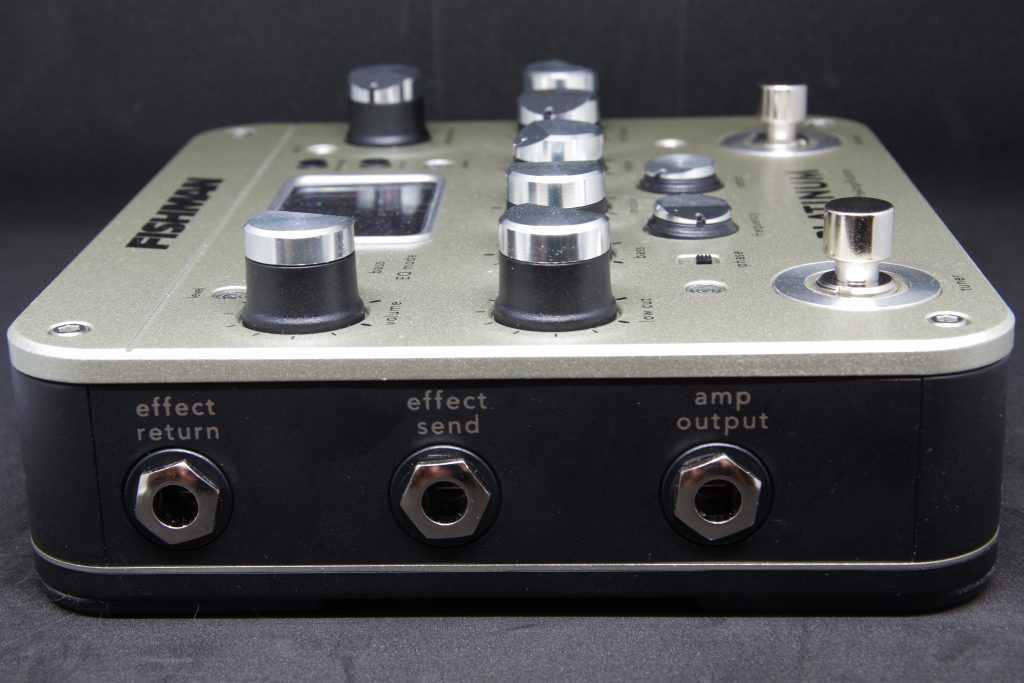
Fishman Platinum Pro
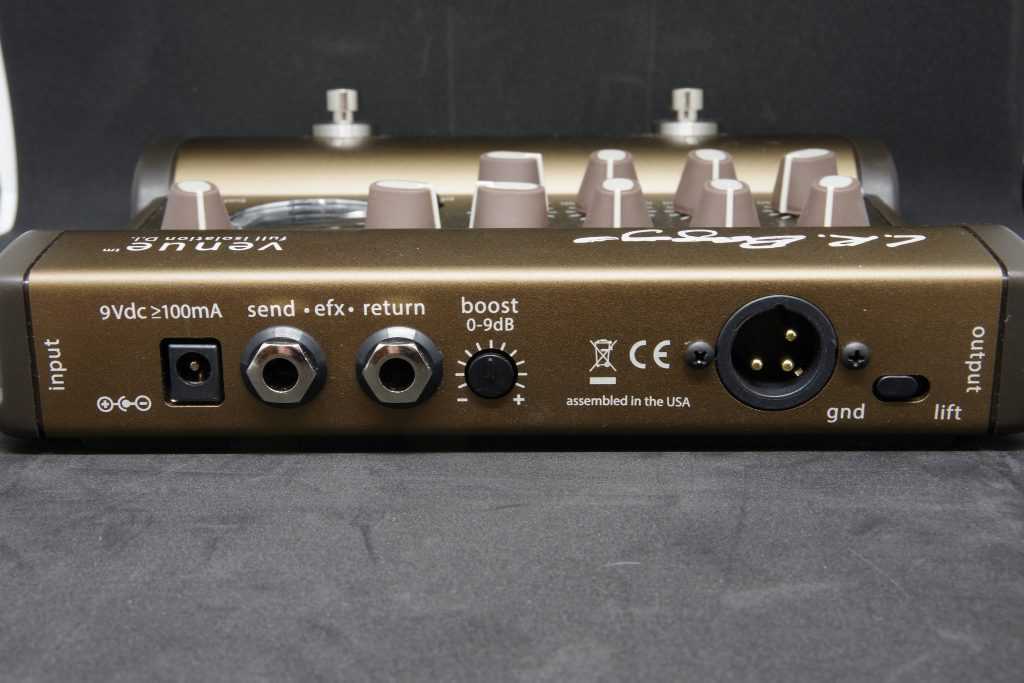
LR Baggs Venue
Acoustic Guitar
In the studio, I mic the guitar and run a DI if I need to. A DI sound is not my preferred tone for acoustic guitar on sessions but that doesn’t mean I never use it. It’s a specific tone and sometimes it’s the perfect one. You may wish to use the DI when you’re trying to isolate the guitar and vocal more. Or if you’re doing a live recording with several loud instruments, and bleed becomes an issue.
Also, if you happen to like the sound of an acoustic guitar but the musician wants to apply guitar pedal effects to it — a DI is your friend. I’ve done sessions where I put a mic on the acoustic and run a DI through some guitar pedals for some unorthodox tones. Get creative with your options.
We start to encounter a few more options in the acoustic DI area. We can still use a traditional DI box like the Radial Passive DI or a mic preamp such as an API 312.
The Radial JDI explained
The term “direct box,” or DI, is short for direct injection box. The basic concept of a DI is rather simple — it’s a box designed to convert a high-Z (high impedance) signal to a low-Z (low impedance) signal. Think of a DI as a signal translator. Passive acoustic and electric guitars deliver high-ZPlay Video
There are also DI/preamps specifically made for acoustic guitar. Let’s discuss a few and what makes them attractive.
ADVERTISEMENT
For acoustic guitars, I tend to get deeper into DI/preamps than with electric guitar. I feel that the acoustic guitar needs more help to sculpt its sound. It can be rather harsh on its own. I like to keep a few DIs around that have EQ on them. Yes, I know we can EQ later, but I really like to capture the sound as close to the desired result as possible when tracking. The better it sounds in the headphones, the better the performance will be from the artist. It also gives you a better perspective of the sonic space available. I don’t wait until later to carve it. Your mixes will turn out much better if you make some decisions early on in the process.
For acoustic guitar, this means I usually decide if the guitar’s role is more like a rhythmic percussion instrument or if it plays a much bigger sonic and harmonic role. This is going to change the way I record and EQ it. I don’t wait until later to figure it out. I’d say that unless you’re using the DI as a backup for a performance, make it sound good. Need some EQ? Sure. Need a dab of compression? Go for it. Keeping things flat is overrated. It’s not uncommon for me to add tape, EQ or compression to a DI signal (depending on whether I’m reamping, of course).
Motown DI
All of the electric guitar sounds recorded for Motown were done through an in-house custom-made tube DI. The sound on “My Girl” was DI electric guitar. Here is a picture of the actual DI they used for bass and electric guitar.
Yes, this is also the preamp that James Jamerson recorded though. Rumor has it that James used an Ampeg flip-top in the studio. But these rumors are false according to the people at Motown I’ve spoken with. Acme Audio created a with NOS components a few years back. This could get you a little closer to that mojo. If you’re really looking to capture this sound, it’s important to consider what rigs they were using.
For instance, “My Girl” was likely recorded by guitarist Robert White with a Gibson L-5 or ES-335 strung with flatwound guitar strings. Yes, I said flatwound strings. A key ingredient to getting some of those early 60s tones are flatwound strings. Make sure to break them in a little, too.
Магазин звукового оборудования Art ZVUK
Профессиональный магазин звукового оборудования АртЗвук (Art ZVUK) имеет многолетний опыт по обеспечению компаний и частных лиц качественной продукцией мировых производителей светового и звукового сопровождения, а также по техническому обеспечению общественных мероприятий различного типа любой степени сложности. Среди наших клиентов — крупные компании, популярные исполнители, известные продюсеры, модельеры, политики и органы государственной власти.
Основной вид нашей деятельности – продажа и прокат качественного звукового и светового оборудования и сценических конструкций.
Наш магазин является официальным дилером португальской фирмы Vicoustic, которая производит высококачественные звукопоглощающие панели и акустические экраны Vicoustic из акустического поролона с эстетичной декоративной отделкой ценными породами дерева и специальной звукопрозрачной тканью!
Осознавая желания клиента, что прокат звука, света, генераторов, усилителей и пультов намного выгоднее, чем их покупка для одноразового или непостоянного использования, мы решили сформировать большую техническую материальную базу профессионального оборудования, которая способна удовлетворить требования самого взыскательного клиента.
Реализуя концепцию индивидуального подхода к работе с каждым клиентом, ArtZvuk может обеспечить оборудованием концерты с «живым» звуком, Fashion показы, конференции, конгрессы, презентации, корпоративные мероприятия, PR и BTL–акции, свадьбы, дискотеки, дни рождения и другие мероприятия.
Throughput on a DI box:
Many DI boxes offer you an additional output known as a ‘throughput’. This allows you to take two signals out of the DI box. One signal will be the processed signal in the form of the low impedance, balanced, mic level signal. The other (the throughput) will be an unprocessed version of the signal. The signal leaves the throughput at the same signal level, impedance and balance as it entered the DI box at.
Sound engineers often utilize this in live sound for bass guitars. The engineer takes the processed signal from the DI box and connects it to a mic level input on the mixing desk. This signal then goes to the front of house. Meanwhile, the sound engineer will route the unprocessed signal from the throughput to a bass amp which is used for onstage monitoring.
In audio recording, the throughput is often used when recording an electric guitar to send the processed version of the signal to your interface to capture a clean signal. Meanwhile, the unprocessed signal is sent to a guitar amp which is recorded with a mic. Having both signals gives you the option to use the clean signal with an amp simulator in your DAW in addition to, or instead of, using the recording of the amp. Alternatively, you could also re-amp the clean signal. This is the process of sending the clean signal back out of your DAW and routing it to a guitar amp. This is useful if you want to experiment with different guitar amps later.
Conclusion
Preamps are almost always used with microphones, even though some preamps may feature a DI input.
Essentially, if you’re looking to increase the level of a mic’s signal to line level, get a preamp. If you want to record electric guitar or bass, get a DI box.
Another option would be to get an Audio Interface like the Audient iD14 or the Audient Sono which feature a DI Input, and the Sono in particular is designed for recording electric guitar directly to your PC without any latency whatsoever and it even comes with an amp simulation software and a built-in valve.
I owned both (now I only use the ID14), and they are absolutely fantastic, so going with one of those might be a better idea if you’re thinking about recording directly to your DAW.
I hope this information was useful!
Have a wonderful day!
Why do you need to use a DI box:
First of all, it’s important to note that different devices (mics, guitars, keyboards etc.) putout different types of signals with regards to their signal level and their output impedance. So when you connect a device to an audio interface or mixing desk, it’s important to connect it to an input which is designed to receive that specific type of signal.
With modern interfaces, it’s increasingly common to have dedicated inputs for ‘Mic’, ‘Instrument’ and ‘Line’ level devices. Having these three types of inputs available will allow you to connect just about any device to your interface. The ‘Mic’ input is there to receive the signal from a microphone. The ‘Instrument’ input is there to receive the signal from things like electric guitars, electric basses or electro-acoustic guitars. The ‘Line’ input is designed to receive signals from things like electric pianos and drum machines.
But what do you do if you do not have access to the type of input that you need? For instance, when you want to connect an instrument like an electric guitar to your interface, but no instrument input is available.
This is where a DI box comes in…
What does a DI box do:
Whilst interfaces and mixing desks do not always provide you with all three types of input, almost all will provide you with mic inputs. These will usually come in the form of an XLR input. This input is designed to receive a low impedance, mic level signal. As previously mentioned, a DI box converts signals to low impedance, mic level signals. As such, you can use a DI box to convert the high impedance, instrument level signal produced by your electric guitar to a low impedance, mic level signal. So now, the signal from your electric guitar can be connected to your mic input. You can also connect any other devices which would not normally be suitable for connection to a low impedance, mic level input (such as an electric piano for example) to a DI box to make them suitable for connection to a mic input.
Being able to convert a signal to a low impedance, mic level signal is really handy. That’s because finding yourself in a situation where only mic inputs are available to you is not uncommon. When you play a live gig, the sound engineer will often use a stage-box. This is used in order to send signals from the stage to the mixing desk. In this instance, you will usually only have access to low impedance, mic level inputs on the stage box in the form of XLR inputs. The same is often true in a studio setting. In this case, a stage-box may be used to send signals from the live room to the control room. Once again, it is likely that you will only have access to low impedance, mic level inputs.
Reamp
Some engineers may want to reamp through different amps for tonal variation. Some of the greatest guitar tones have been combinations of amps — for example, on Nirvana’s “Nevermind”. Running a DI can give you some flexibility with tonal shaping later for those of us who can’t set up multiple amps at the same time.
We can record DI and send to more amps later. In this scenario, I use the Radial JCR reamp box. Remember what I said earlier about sound contributing to performances? Using a DI and a crappy amp sim won’t be reassuring to guitarists. For this reason, I still try to record one amp live (if this options exists) and a DI to add more amps later. There are a few good amp sims on the market, though. Some of my faves come from Universal Audio. They feel closer to the natural sound and feel of a real amp. These can act as a temporary place marker when a live amp isn’t an option.
Learn More
Take your guitar tone, productions and recordings to the next level with the debut course from Mark Marshall: Producing & Recording Electric Guitar
Includes 9+ hours of in-depth training on all aspects of guitar. There are many variables that can impact the tone and quality of a guitar recording — from setup, string gauge, amps and pickups, to processing, effects and miking. Mark breaks it all down so you can confidently create awesome guitar tone and take your mixes, productions, performances and recordings to the next level.
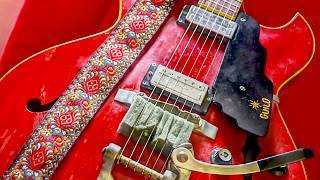
New Course: Producing & Recording Electric Guitar
The term “direct box,” or DI, is short for direct injection box. The basic concept of a DI is rather simple — it’s a box designed to convert a high-Z (high impedance) signal to a low-Z (low impedance) signal. Think of a DI as a signal translator. Passive acoustic and electric guitars deliver high-ZPlay Video
-
Share
-
Tweet
Mark Marshall is a producer, songwriter, session musician and instructor based in NYC. More at guitaristmarkmarshall.com
What is a Preamp?
 Pro MPA-II Two Channel Studio Mic Preamp
Pro MPA-II Two Channel Studio Mic Preamp
A preamplifier is either the circuit within a device, such as a Microphone or Audio Interface, or it can also be a dedicated external device that has the same circuit in it, and it’s designed to raise the low signal level coming from a microphone to be able to be recorded properly, otherwise known as “line level”.
Some microphones, like the famous Shure SM7B, have such a low output that in order to get the signal to a respectable level you will need quite a powerful preamp.
In addition to this, using a high-quality preamp will not just provide you with a stable- higher-level signal, but it will also reduce unwanted noises, ending up in a much cleaner end product.
A mic preamp not only provides gain for the microphone’s signal, but it can also feed 48v phantom power to condenser microphones.
Why use a dedicated Preamp?
Preamps nowadays come already built into almost every piece of musical equipment on the market simply because of how useful they are, but you can also decide to purchase an external/dedicated one (Not needed for most people).
Microphones, mixers, Audio Interfaces, and other equipment generally have built-in preamps.
However, in the more affordable range, these preamps may not be that great; an example would be the ones on the Behringer UM2 Audio Interface, since if you increase the gain on the preamp, it sounds distorted, even when the audio Is not clipping (digital distortion)
The main reason to use a dedicated preamp, and it’s also why they are used in high-end studios, is to get the best-sounding recording possible.
However, there is one other very important reason to using a preamp, and that is “audio coloration”; Preamps, especially tube/valve ones, will add character to the sound, and depending on the situation this might be exactly what your music needs.
Just know that a dedicated preamp can be extremely expensive and that it’s just one piece of the puzzle to get high-quality audio.
What Types of Preamps are there?
Note: I wrote an extensive article talking about what a preamp is and all the different ones available that you should definitely check out, but here’s a quick recap:
Tube Preamps
These preamps use Valves, or Vacuum tubes, to create Gain.
These will color the sound significantly since they aren’t “transparent” like some other preamps.
Tube Preamps are known for adding warmth especially to the mids, but also body to the bass and airiness to the highs.
This warmth is added when the signal increases, because tubes tend to distort the sound a bit but in a “pleasing” way. The circuit of a tube preamp also creates some slight compression, which adds color.
Solid State Preamps
Transistors are great at creating gain with less heat, which means that as the gain increases, they can maintain very low distortion until they reach the maximum level, at which point the distortion will be extremely noticeable.
This is also known as clipping.
Digital Preamps
Digital preamps take the analog signal and convert it to a digital signal, adding their own sonic flavor in the processing before the signal is sent to the DAW.
These preamps are useful because they allow you to bypass the Audio Interface’s built-in audio conversion which tends to be inferior (usually, although in most cases it’s not a problem).
Technically you could refer to these as Audio Interfaces, since they amplify the signal and also convert it to a digital format so that your PC can record it. BUT their main focus is on the preamp!
These are all Microphone specific preamps, but there are also Instrument specific ones available that are designed to optimize the tone of a specific instrument, such as Bass Guitar, Electric Guitar, etc.
The Cushion
Even when your taste doesn’t lead to those clean disco sounds, you can use a DI as an insurance plan. All kinds of things can go wrong with pedalboards during a session. Crackles and clicks from pedal switches or even an entirely wrong sound can ruin a recording. To prevent this, some engineers will put a DI box before the pedalboard. This way if anything goes wrong, you have a clean DI track to reamp the guitar with later.
One thing worth mentioning is to make sure that the thru output on your DI remains a high-Z signal. Some guitar pedals like Treble Boosters and germanium-based fuzz pedals (Fuzz Faces, Tone Benders, Maestro FZ1, etc.) don’t like seeing a low-Z signal. It can change the sound of those pedals and make them act strangely. Most notably they can become brighter and lose their dynamics. So if you’re going to grab the signal before the pedalboard, it’s best to be a ghost and not interrupt the existing signal chemistry.
This is a big issue with me because I use a bunch of germanium-based pedals. My Analog Man Sun Face, Analog Man Beano Boost, and LIC ToneBender MKI and MKII don’t like seeing a low-Z signal. As you can tell, I’m very touchy about my signal flow.






![5 best di boxes: a direct gear guide [2022] | equipboard](http://basis-tp.ru/wp-content/uploads/c/f/f/cff7deb3610f3bc6ee1d9fe46b94f2bc.png)






















